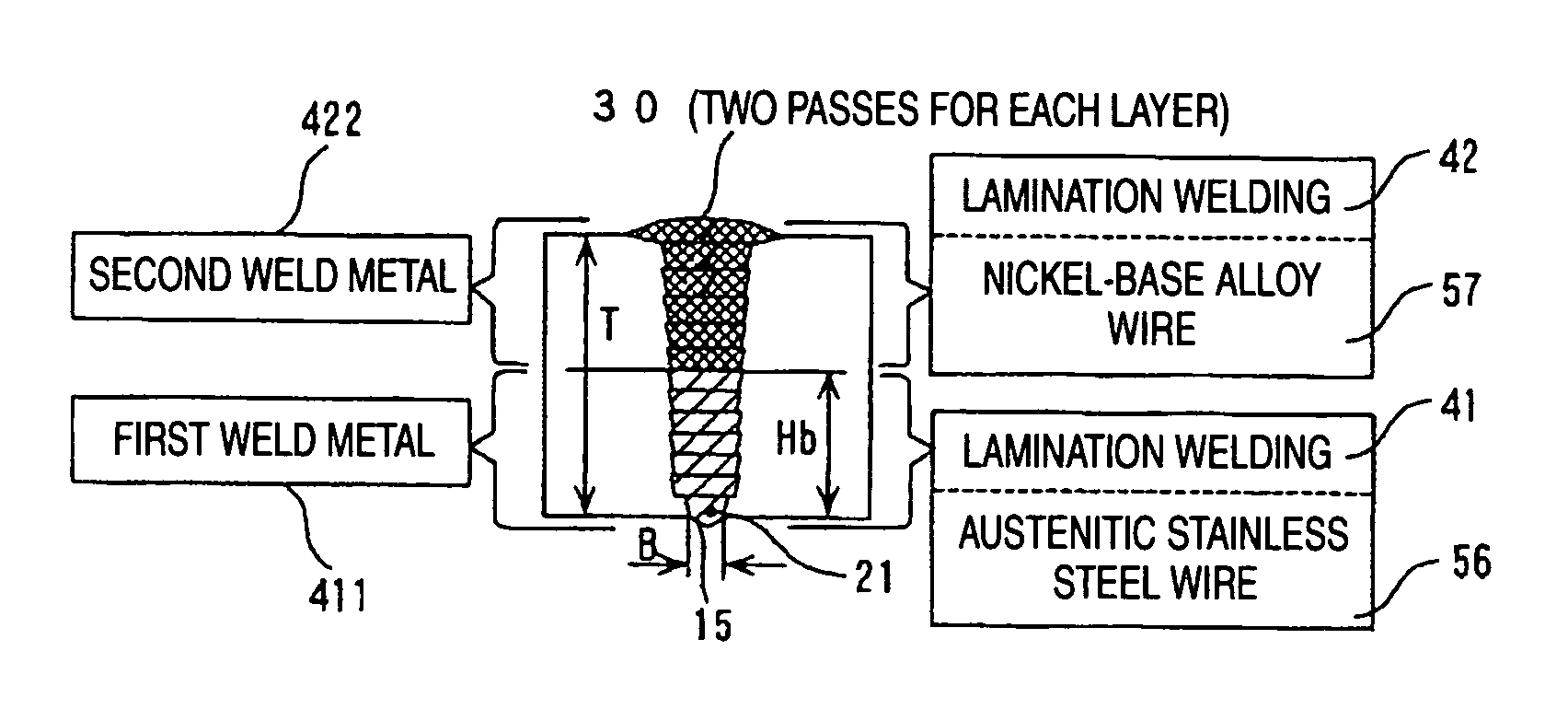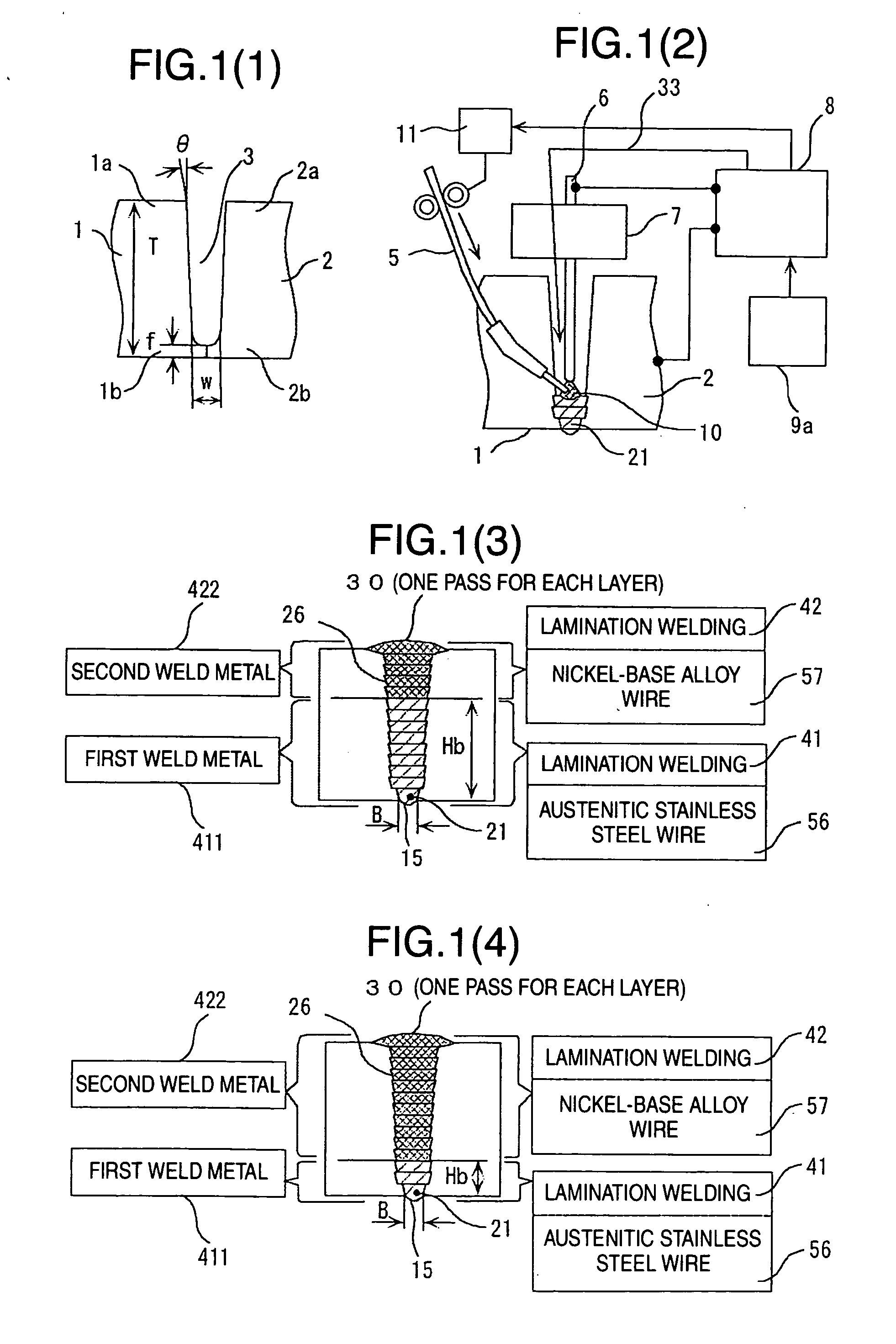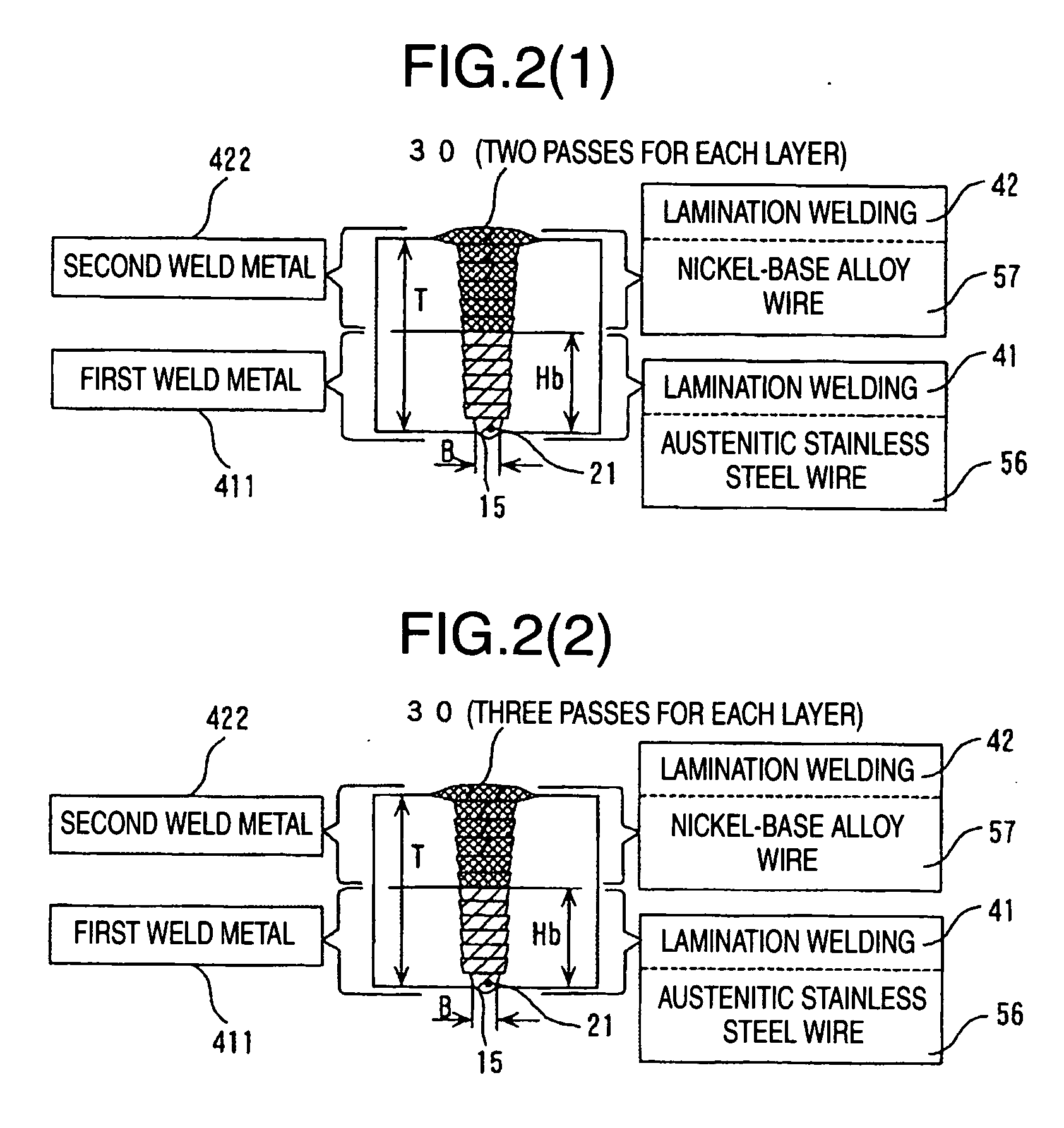Welding process for stainless steel piping
a technology of stainless steel piping and welding process, which is applied in the direction of welding/soldering/cutting articles, other domestic articles, manufacturing tools, etc., can solve the problems of stress corrosion cracking in the weld, high cost of heating, and high work and cost. , to achieve the effect of reducing residual stress and suppressing stress corrosion cracking
- Summary
- Abstract
- Description
- Claims
- Application Information
AI Technical Summary
Benefits of technology
Problems solved by technology
Method used
Image
Examples
embodiment 1
[0084] FIGS. 1(1) to (4) show Embodiment 1 and illustrate the outline of a welding process for austenitic stainless steel piping according to the present invention. FIG. 1(1) shows a cross section of a groove joint member of the piping before welding, FIG. 1(2) is a cross section of the general structure of a welding apparatus during welding, FIG. 1(3) is a cross section in which austenitic stainless steel wire is melted in a groove for lamination welding to a height Hb corresponding to approximately ⅗ of a thickness T from the bottom of the groove, and then the wire is replaced with nickel-base alloy wire for lamination welding to the final layer at the top of the groove from a remaining weld 26, and FIG. 1(4) is a cross section as in FIG. 1(3) in which austenitic stainless steel wire is melted in the groove for lamination welding to a smaller height Hb corresponding to approximately ¼ of the thickness T, and then the wire is replaced with nickel-base alloy wire for lamination weld...
embodiment 2
[0097] FIGS. 2(1) and (2) are cross sections in which lamination welding is performed with an increased number of welding passes in Embodiment 2 illustrating a welding process for austenitic stainless steel piping according to the present invention.
[0098] Even when a groove width is so large that welding is not easily achieved by the one layer-one pass welding, or under the same or slightly lower heat input for arc, the one layer-two pass welding can melt both walls having that groove width to provide favorable welding results to the final layer at the top of the groove.
[0099] In addition, the welding passes of the final layer can be increased to three or more to further increase the cumulative bead width of the final layer.
[0100] A second welding metal 422 has a linear expansion coefficient smaller than that of a first welding metal 411 and involves less contraction in the process of solidification after the melting, so that the contraction in the circumferential direction (the ...
embodiment 3
[0101]FIG. 3 is a flow chart for explaining an embodiment of the welding process for austenitic stainless steel piping.
[0102] At first step 51 of manufacturing a groove shape before welding, the joint members to be welded are machined to predetermined dimensions, they are carried to a location for welding, the joint members after processing and parts are assembled, and the like. For example, at the manufacturing step 51, the groove width, the groove wall angle and the like are adjusted.
[0103] Next, at a welding preparatory step 52, welding vehicle 4, welding torch 7, wire 5 and the like are set up. TIG welding power supply 8 and welding controller 9a are activated. Welding operation is prepared and the welding conditions are set. For wire 5, austenitic stainless steel wire 56 made of the same material as that of the welding joint is preferably prepared.
[0104] Then, at a first lamination welding step 41, which includes first layer penetration welding for forming a predetermined ba...
PUM
| Property | Measurement | Unit |
|---|---|---|
| Pressure | aaaaa | aaaaa |
| Angle | aaaaa | aaaaa |
| Width | aaaaa | aaaaa |
Abstract
Description
Claims
Application Information
 Login to View More
Login to View More - R&D
- Intellectual Property
- Life Sciences
- Materials
- Tech Scout
- Unparalleled Data Quality
- Higher Quality Content
- 60% Fewer Hallucinations
Browse by: Latest US Patents, China's latest patents, Technical Efficacy Thesaurus, Application Domain, Technology Topic, Popular Technical Reports.
© 2025 PatSnap. All rights reserved.Legal|Privacy policy|Modern Slavery Act Transparency Statement|Sitemap|About US| Contact US: help@patsnap.com



